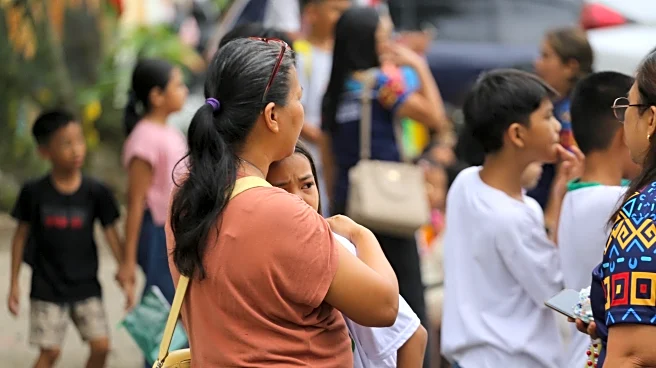What's Happening?
A 7.6-magnitude earthquake struck off the southern coast of the Philippines, causing panic among residents and prompting evacuations due to potential tsunami threats. The earthquake occurred near Manay town in Davao Oriental province, leading to power outages and structural damage. President Ferdinand Marcos Jr. announced that rescue teams and relief operations are being prepared to address the aftermath. The Pacific Tsunami Warning Center initially issued a tsunami threat, which was later lifted, although small sea fluctuations were observed. The earthquake's impact included cracks in buildings and the evacuation of schools, with reports of students experiencing dizziness and fainting.
Why It's Important?
The earthquake highlights the vulnerability of the Philippines, a nation frequently affected by seismic activity due to its location on the Pacific 'Ring of Fire.' The event underscores the importance of disaster preparedness and response in a country that regularly faces natural calamities, including typhoons and volcanic eruptions. The government's swift action in evacuating coastal areas and assessing damage is crucial to minimizing casualties and ensuring public safety. The incident may also prompt further investment in infrastructure resilience and emergency response capabilities.
What's Next?
Authorities are expected to continue monitoring the situation for aftershocks and further damage assessments. The government may deploy additional resources to affected areas to support recovery efforts. Coastal communities will remain on alert for potential sea fluctuations, and officials will likely review and update disaster preparedness plans. The event may lead to discussions on improving building codes and emergency protocols to better withstand future seismic events.
Beyond the Headlines
The earthquake could have long-term implications for the Philippines' disaster management strategies, potentially influencing policy changes and international cooperation in disaster risk reduction. The event may also raise awareness about the need for community education on emergency preparedness and the importance of resilient infrastructure.













